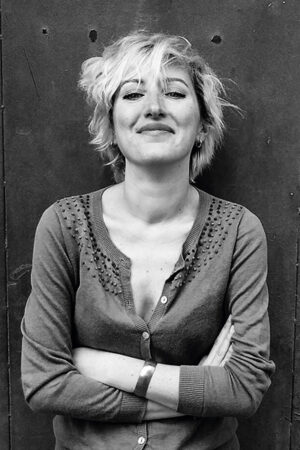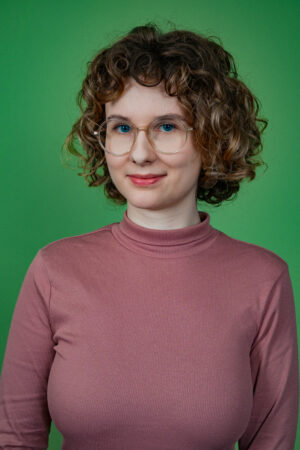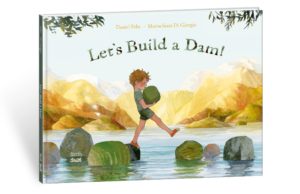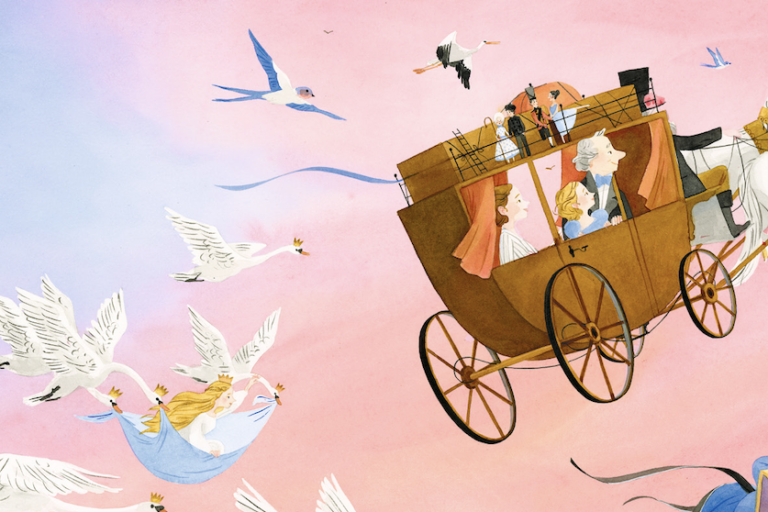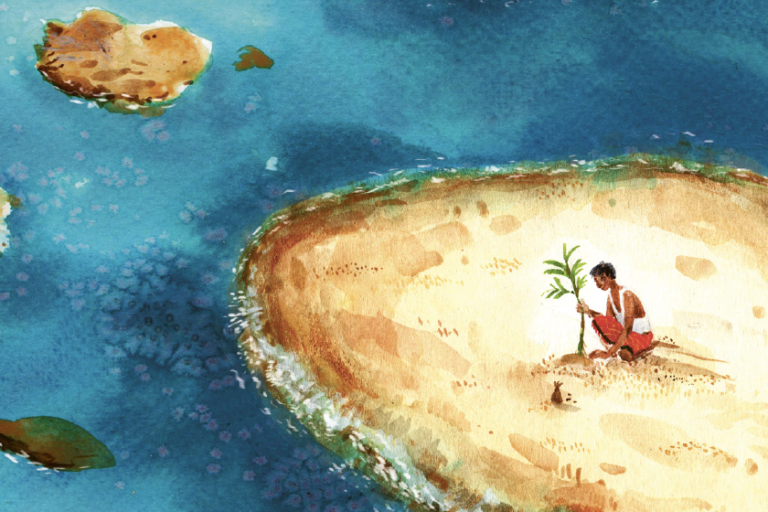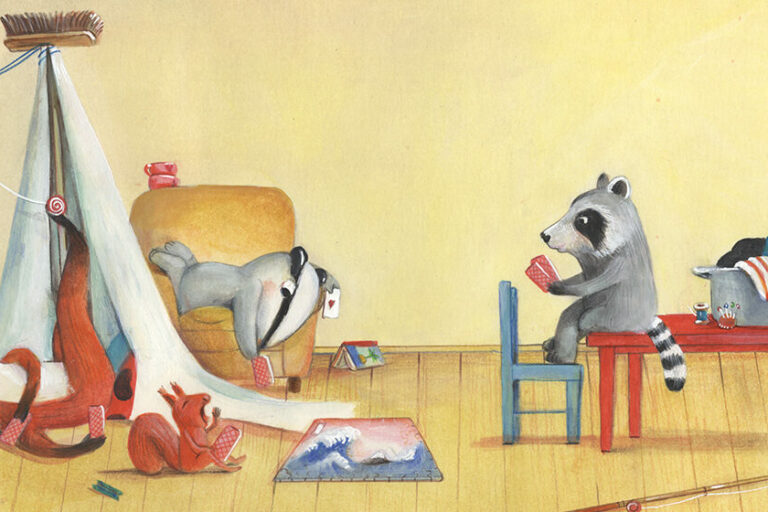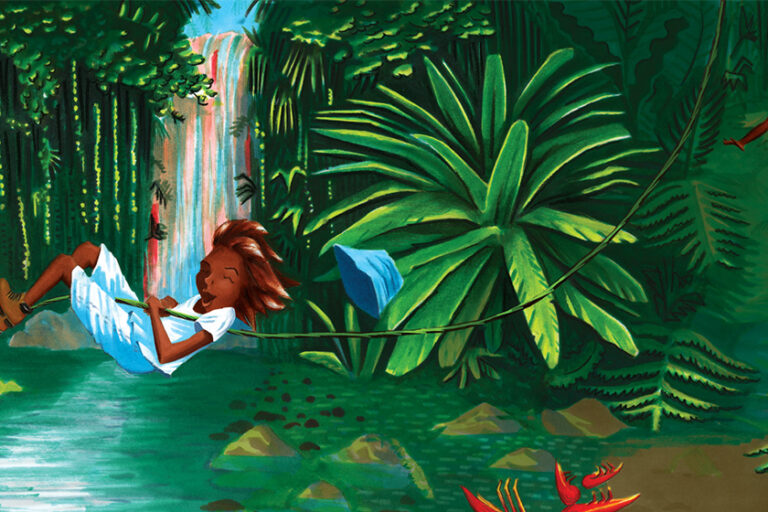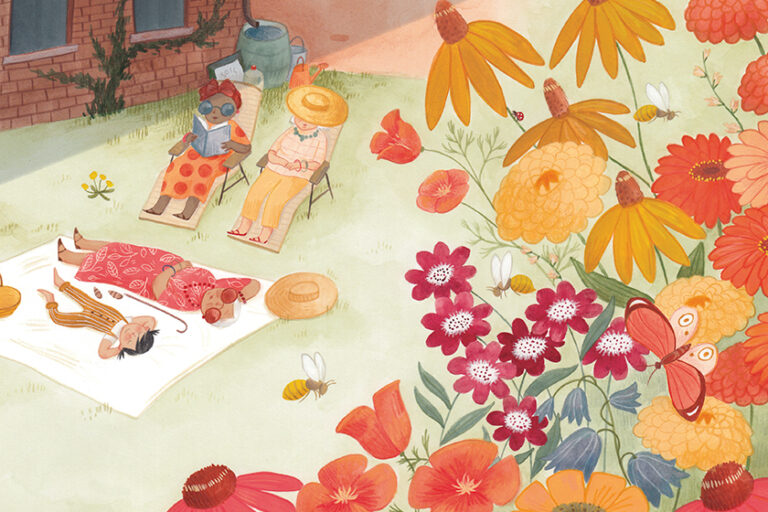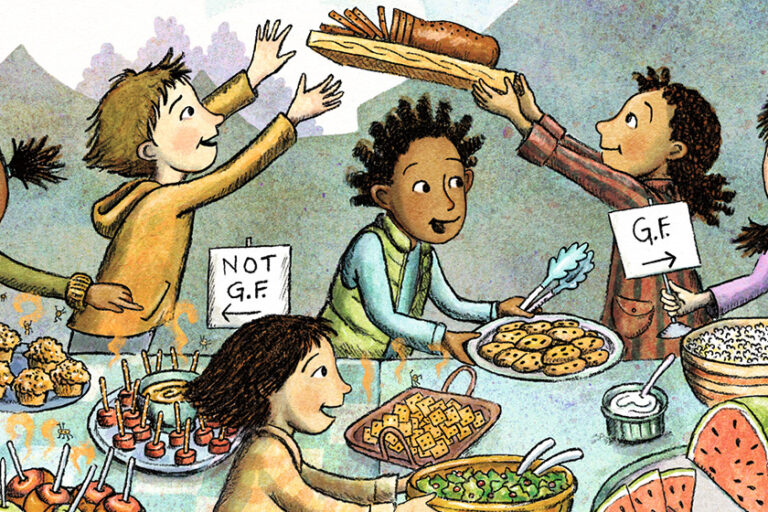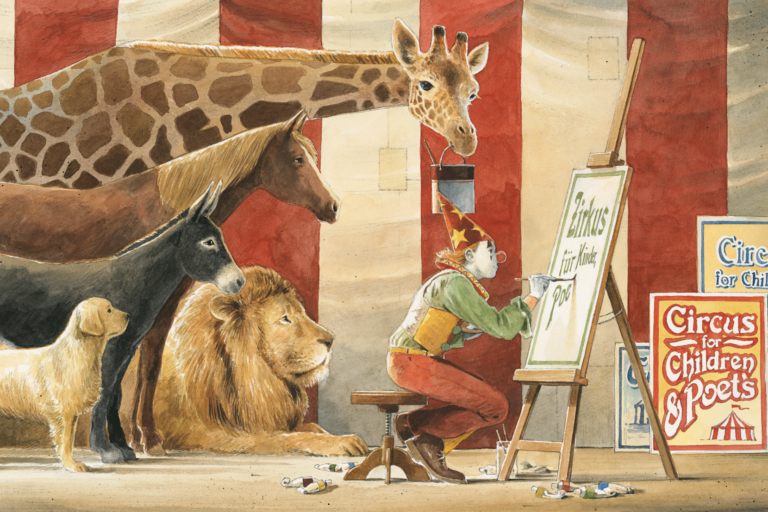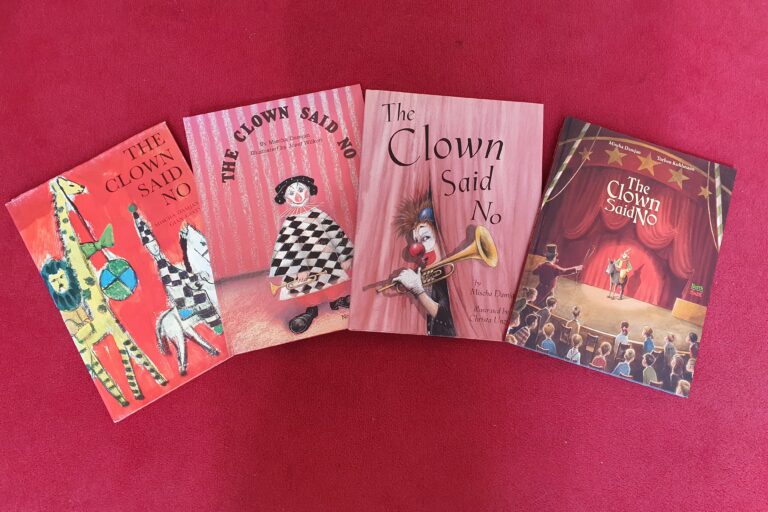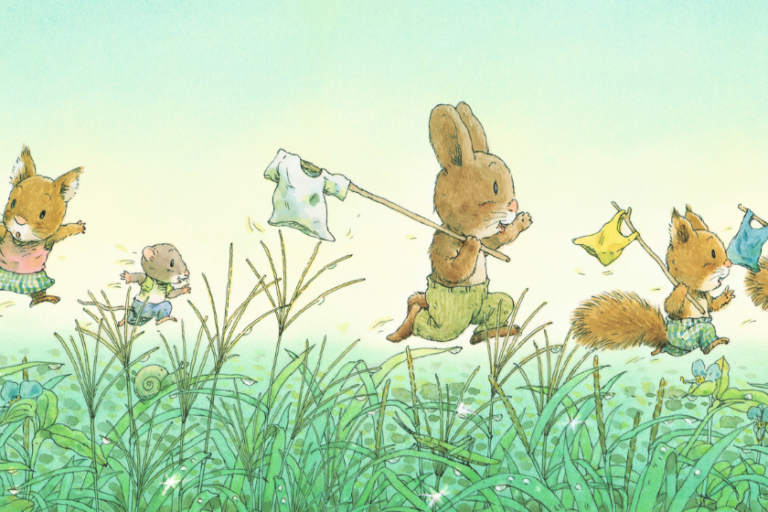Stone by Stone
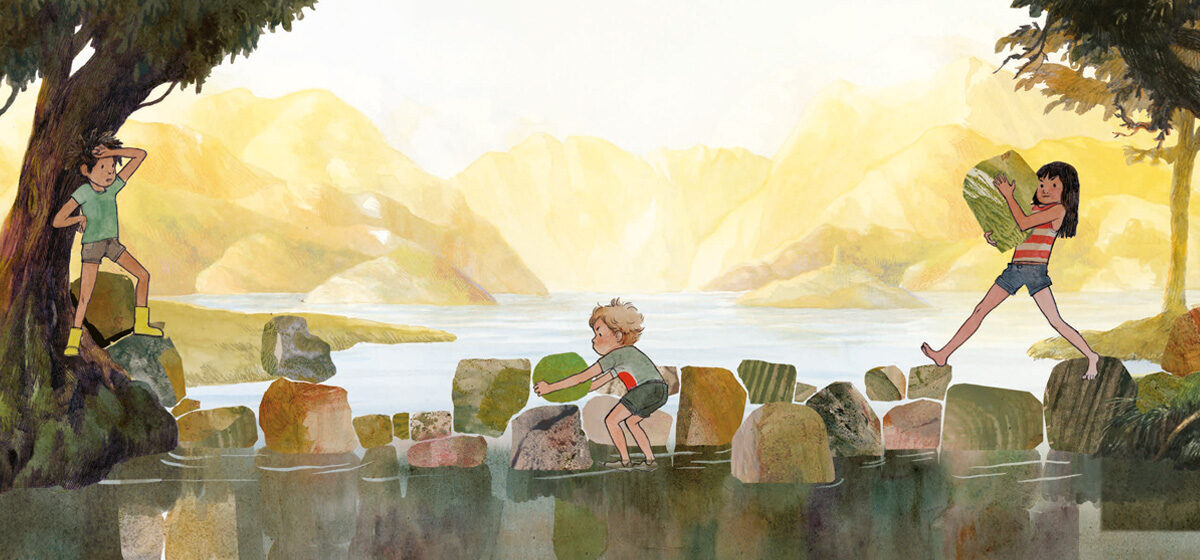
Editor Naomi Wolter discusses the process behind Let’s Build a Dam!
Ideas for our NorthSouth books take different routes to find us. In Let’s Build a Dam!, Swiss author Daniel Fehr’s text has been lovingly brought to life through Italian illustrator Mariachiara Di Giorgio’s pictures. NordSüd Verlag editor Naomi Wolter describes the origin of the book and how it became an international partnership. This interview was translated by David Henry Wilson.
Let’s Build a Dam! brings back lots of lovely childhood memories from when I used to play in the water, either by a lake or in a nearby stream. In Swiss German, I would “bächli staue,” using sticks and stones to try to block the flow of the water, or to divert it and control it. The book showed me that I shared such memories not only with my playmates, but also with lots of other people.
It was the same childhood memory that inspired Daniel to create this picture book. When I asked him how he came to write the story, he replied: “I didn’t have any ideas, and I just went on a trip somewhere. All I remember was sitting in a train one evening, feeling rather tired, but still seeing the shining waters of the lake. And that was when I must have recalled how as a child I loved to try and dam the streams. In my mind’s eye even now I have an image of my sister and me laying stones on top of stones, and as the dam grew, so did our fantasies about them.”
One image in the mind’s eye can spark off a whole story. The spark led to a manuscript, which eventually landed on my editorial desk. We receive new manuscripts every day, and one of our jobs at NordSüd is to glean from the pile any that might be suitable for our program. We’d already been in contact with Daniel Fehr for many years and had often exchanged ideas about his stories. When he sent us this manuscript in 2019, we knew at once that it was a winner!
As the dam grew, so did our fantasies.
Daniel Fehr
Let’s Build a Dam! is a funny fantasy, and many children, as well as the grown-ups who read to them, are familiar with the setting and with the concept of dam-building itself. This is essential because our young readers want to identify with the characters in a story and feel what they feel. This is the all-important role played by the strong central characters, the three siblings—May, Lily, and Noah—who speak very freely to one another as they build the layers of stones.
Just as central to the everyday realities of the book is the fantasy. This is first evident in the fact that the children’s dam is way too big, but they want it to be even bigger, and second, because it attracts the most unlikely characters, including some pirates and a king. When we initially read the text, it immediately conjured up a host of images in our minds. This, of course, is crucial to the reader because if the text can’t be translated into pictures, then obviously it won’t be much good as a picture book!
When we read the text, it immediately conjured up a host of images in our minds
Naomi Wolter
From the very beginning, the artist we wanted to illustrate this fantastic story was Mariachiara Di Giorgio. We as publishers and Daniel Fehr as author had long been harboring a desire to work with her. In the world of picture books, this Italian artist is very well-known and popular. We sent her the text and she loved it. What’s more—and just as important—she happened to be free to tackle the project for us! When I asked what it was that had attracted her to the story, she said: “I liked the idea of what in reality is a serious occupation being turned into a game that evokes vivid images of fantasy. The concept of a dam, which creates a fantasy world as it grows bigger and bigger is really lovely. All the energy of the children gathers itself up into a stormy sea, in an escalation of absurd situations until it finally explodes in the hands of the youngest child and floods us all!”
We were simply delighted to be working with Mariachiara. It was the very first time she had collaborated with a German-language publisher on an original children’s book, and so it was a world premiere for us all!
Because Mariachiara lives and works in Rome, our discussion of her illustrations took place mainly through emails and video calls. A mixture of Italian, French, and English language abilities on our end helped us communicate our thoughts. As her editor, I found our collaboration truly inspiring—from storyboard to the first colored sketches and right through to the completed collage of stones.
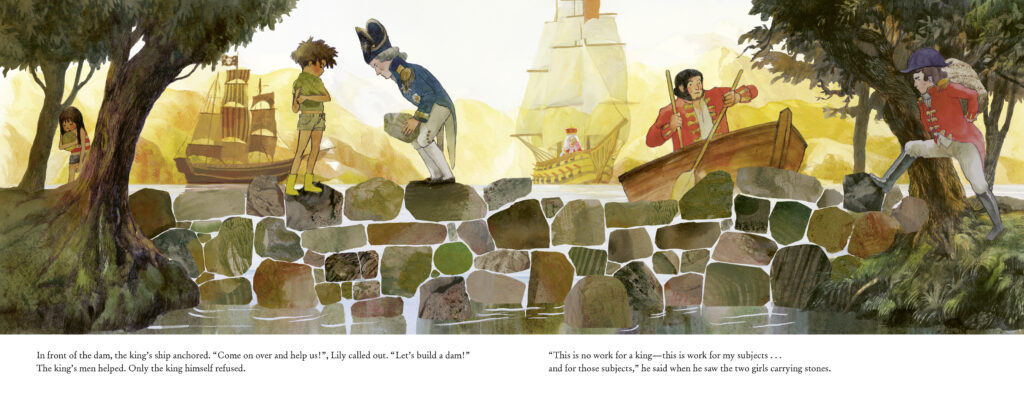
Mariachiara had worked out a very precise design concept for this book. The landscape format offers a wide expanse to accommodate the dam, and each page’s text is set in a white block below the picture—rather like subtitles in a film.
She explained to me how she came to choose this format: “I decided to use a fixed framework because I liked the idea of the dam growing every time you turned the page. It was almost a form of animation, which accentuates the active work of the children and contrasts it with the absurd and fantastic world we see in the background. By lightening or darkening the children’s scenes, I was able to switch the focus from the activities of the children to events in the background, and vice versa. Lighting effects—a bit like the theater.”
When the illustrations were ready, we had reached the tricky point in which the text had to be added to the pictures. In Let’s Build a Dam!, there’s a dramatic relationship between what we see and what we read, and this increases the excitement from one page to the next. I wondered why Daniel had had the great idea of getting Mariachiara to illustrate this special process. His answer was “Mariachiara’s style can be like a shining mountain lake: clear and yet not easy to pin down. I could well imagine her capturing the mood of the children just as well as the strangeness of what was happening on the lake. And she’s done that superbly. Even better than I’d imagined!”
Ultimately, you might say that making a picture book is not so very different from building a dam!
Naomi Wolter
The journey from the idea for a story through its transformation into pictures and finally into a published picture book requires an extraordinary number of steps to be taken by a lot of different people. There are all kinds of ways in which this collaboration comes about, just as there are many ways to choose which author and which illustrator will be brought in on a particular project. Ultimately, you might say that making a picture book is not so very different from building a dam! It works best when everyone pulls together and gets along with everyone else, but there is still plenty of room left for each individual’s imagination.

